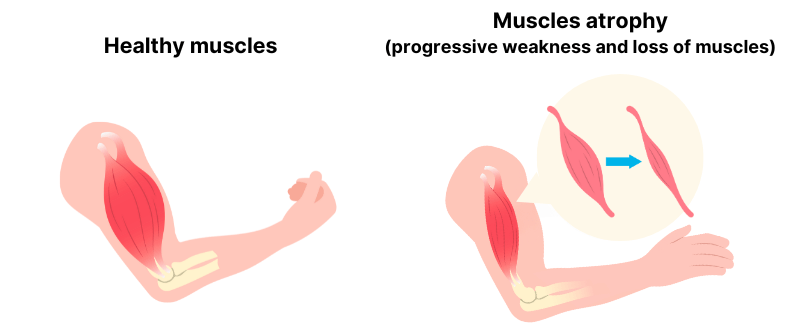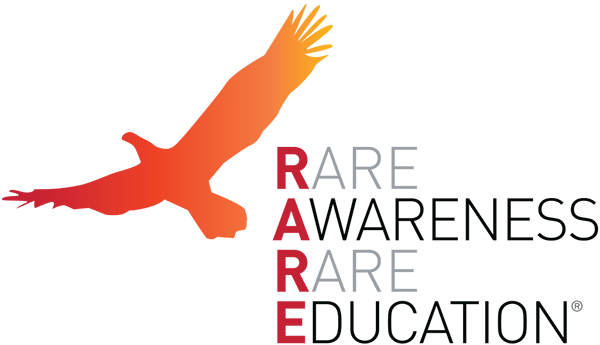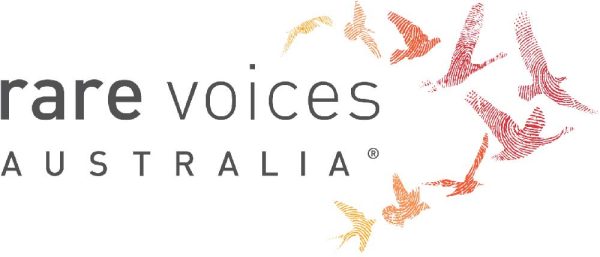Limb-girdle muscular dystrophy (LGMD)
Quick Search
- Summary
- Synonyms and Classifications
- Symptoms
- Disability Impacts
- Cause and Inheritance
- Diagnosis
- Treatment
- Clinical Care Team
- Clinical Care Guidelines
- Emergency Management
- Research
- Rare Disease Organisation(s)
- Lived Experience
- Support Services and Resources
- Mental Health
- Other Information
- Useful Links for Healthcare Professionals
Summary
Limb-girdle muscular dystrophy (LGMD) is a group of genetic conditions that primarily affects the muscles closest to the centre of the body (the proximal muscles), which are the shoulder, pelvis, upper arm and upper leg muscles.1,2 These muscles are also described as the limb-girdle muscles. These conditions are a type of muscular dystrophy and are characterised by progressive muscle weakness and loss (wasting/atrophy).1 Symptoms of LGMD vary between the different types and can range from mild forms (in which there is later onset and slow progression) to severe forms (onset during early childhood and rapid progression).1
Synonyms and Classifications
There are no known synonyms.
Universal rare disease classifications provide a common language for recording, reporting and monitoring diseases. Please visit the Rare Disease Classifications page for more information about these internationally recognised classifications.
Symptoms
LGMD mainly involves progressive weakness and loss (wasting) of the muscles closest to the centre of the body (proximal muscles), which are the muscles of the shoulder, pelvis, upper arms and upper legs.1,2 The hip muscles are often the first to be affected. Weakness in the proximal muscles may impact on how the individual walks resulting in a waddling gait and cause difficulties in climbing stairs, getting up from a sitting position, raising their arms or carrying heavy objects.2

For some types of LGMD, there may be weakening of the heart muscle, resulting in difficulties in pumping blood to the rest of the body (cardiomyopathy).1,2 Respiratory muscles may also be affected in some cases, leading to breathing difficulties.
Symptoms can vary between individuals – those with the same type of LGMD may experience different symptoms, age of onset and disease progression.2
Please speak to your medical team to learn more about the symptoms for a specific type of LGMD.
Disability Impacts
Rare diseases are often serious and progressive, exhibiting a high degree of symptom complexity, leading to significant disability. Majority of the estimated two million Australians living with a rare disease meet the Australian Government’s definition for disability (in accordance to the Australian Public Service Commission and Australian Bureau of Statistics), and many experience severe and permanent disability impacts. If you or someone you care for is experiencing disability-related impacts from a rare condition, please speak with a health or disability professional for advice. Information about relevant disability support can be found at the RARE Portal’s Disability Support Information page.
Cause and Inheritance
LGMD is a group of genetic conditions caused by disease-causing genetic variants (changes) in specific genes. The gene that is affected differs between the different types of LGMD.1,2
Conditions that have an autosomal dominant inheritance pattern are represented by the letter ‘D’ (previously classified as Type 1), whilst conditions with an autosomal recessive pattern are represented by the letter ‘R’ (previously classified as Type 2).3
More information on the relevant inheritance patterns can be found at:
- Centre for Genetics Education: Autosomal dominant inheritance
- Centre for Genetics Education: Autosomal recessive inheritance
If you would like to learn more about the inheritance and impact of a particular type of LGMD, please ask your doctor for a referral to a genetic counsellor. Genetic counsellors are qualified allied health professionals who can provide information and support regarding genetic conditions and testing. More information about genetic counselling can be found at:
- Information on Genetic Services
- The National and State Services pages underneath the ‘Genetic Counselling’ sections listed
Diagnosis
Diagnosis of LGMD may be based on clinical examination, muscle biopsies, blood tests and genetic testing.1
Please speak to your medical team to learn more about the available diagnostic pathways for a particular type of LGMD.
Treatment
There is currently no curative treatment for LGMD.1,4 Treatment is is targeted at managing symptoms (symptomatic management) and involves a multidisciplinary care team. This may include physiotherapy and occupational therapy, assistive equipment, mobility and medical aids. Information on equipment and assistive technology can be found at The Loop – Your Neuromuscular Resource Hub: Equipment.
For certain types of LGMD, there may be complications of the heart and breathing muscles (respiratory system), hence regular monitoring may be required.1,2
Please speak to your medical team to learn more about the possible treatment or management options for your condition. Treatment will depend on an individual’s specific condition and symptoms. It is also important to stay connected to your medical team so that you can be made aware of any upcoming clinical trial opportunities.
Clinical Care Team
Clinical care for rare diseases often involves a multidisciplinary team of medical, care and support professionals. Please note that the information provided here is as a guide and that RVA does not necessarily monitor or endorse specific clinics or health experts.
Healthcare professionals involved in the treatment of LGMD may include general practitioners (GP), geneticists, genetic counsellors, neurologists, physiotherapists and occupational therapists. The need for different healthcare professionals may change over a person’s lifetime and extend beyond those listed here.
The Loop – Your Neuromuscular Resource Hub: NMC Clinics lists available specialist clinics provide care and support for children and adults living with certain neuromuscular conditions across Australia.
Clinical Care Guidelines
We are not aware of any clinical care guidelines for LGMD in Australia. If you know of any relevant care guidelines, please let us know via the Contribute page.
The following guidance is available from international experts outside Australia; however, there may be information that is not relevant or applicable to the Australian context, and may not be up to date:
- 229th ENMC international workshop: Limb girdle muscular dystrophies – Nomenclature and reformed classification (Naarden, the Netherlands, 17–19 March 2017) reports on a consensus on an updated nomenclature and classification for Limb-Girdle Muscular Dystrophy (LGMD)
- Evidence-based guideline summary: diagnosis and treatment of limb-girdle and distal dystrophies: report of the guideline development subcommittee of the American Academy of Neurology and the practice issues review panel of the American Association of Neuromuscular & Electrodiagnostic Medicine (United States of America, published in 2014)
Emergency Management
Individuals living with rare diseases may have complex medical issues and disabilities, which are not always visible. It is often useful to refer to their medical history as well as personal information such as a medical card, doctor’s letter, or if available, a rare disease passport, for relevant information.
It may be important to consider the following when managing individuals living with LGMD at emergency departments/services:
For some types of LGMD, there may be complications arising from use of anaesthesia, hence caution may be required when using anaesthesia in the treatment of LGMD patients.4 It is important for individuals to inform the medical team of their LGMD diagnosis prior to any anaesthetics being administered.
OrphanAnesthesia has Anaesthesia recommendations for limb-girdle muscular dystrophy; please note this was last updated in 2015.
Research
The Australian Neuromuscular Disease Registry is an Australian-wide registry that collects information about individuals with certain neuromuscular conditions, including LGMD. The registry collects important medical information from adult and child patients across the country to improve the understanding of neuromuscular disease and accelerate the development of new therapies.
There are specific considerations around participating in rare disease research, including clinical trials. It is important to be mindful of issues such as data privacy, research ethics, consent and differences in research regulations between Australia and other countries.
If you are interested in finding clinical trials for your condition, please visit the following websites; however, there may not be any clinical trials available:
It is best to discuss your interest in any clinical trials with your medical team to determine suitability and eligibility.
Please note that RVA does not necessarily monitor or endorse each group/organisation’s operational governance and activities.
Rare Disease Organisation(s)
Australian Organisation:
Daniel Ferguson LGMD Foundation
Website: https://www.dffoundation.com.au/
Daniel Ferguson LGMD Foundation aims to support those living with all types of LGMD by improving their quality of life, increasing community awareness of the disorder and funding much-needed research into this disease for which no cure exists.
Please note that RVA does not monitor or endorse each group/organisation’s operational governance and activities. When engaging with a group, please consider the information on the RARE Portal’s Finding Helpful Peer and Community Supports page.
Lived Experience
LGMD varies between individuals, and each person’s experience is unique.
If you would like to share your personal story with RVA, please visit the Rare Voices Australia: Share Your Story page. RVA will consider your story for publishing on our website and inclusion on the RARE Portal.
Support Services and Resources
Daniel Ferguson LGMD Foundation: Peer Support has information about peer support relevant for individuals living with LGMD.
For information on available government and social services that provide support for individuals with a rare disease, please visit the National and State Services pages.
Mental Health
People living with a rare disease, including families and carers, often face unique challenges such as diagnostic delays, misdiagnoses, limited treatment options, and limited access to rare disease specialists and support. These challenges may impact people’s emotional wellbeing and quality of life. Many people find it helpful to seek mental health and wellbeing support to cope with ongoing stress and uncertainty. Connecting with people who have shared experiences through a support group may also be helpful. Information about relevant mental health and wellbeing support can be found at:
- Mental Health and Wellbeing Support for Australians Living with a Rare Disease
- The National and State Services pages underneath the ‘Mental Health’ sections listed
Other Information
Further information relevant to LGMD can be found at:
- The Loop – Your Neuromuscular Resource Hub: Limb Girdle Muscular Dystrophy (LGMD)
- RARE Portal: Muscular Dystrophy
- Genetic and Rare Diseases (GARD) Information Center: Limb-girdle muscular dystrophy
- National Organization for Rare Disorders (NORD): Limb-Girdle Muscular Dystrophies
- TREAT-NMD: Limb girdle muscular dystrophy
Useful Links for Healthcare Professionals
References
- Cao XQ, Joypaul K, Cao F, et al. Anesthetic management of a patient with limb-girdle muscular dystrophy 2B:CARE-compliant case report and literature review. BMC Anesthesiology. 2019;19(155). https://doi.org/10.1186/s12871-019-0813-8
- Orphanet. Limb-girdle muscular dystrophy. Accessed 15 November 2023. https://www.orpha.net/consor/cgi-bin/OC_Exp.php?lng=EN&Expert=263
- National Organization for Rare Disorders (NORD). Limb-Girdle Muscular Dystrophies. Accessed 15 November 2023. https://rarediseases.org/rare-diseases/limb-girdle-muscular-dystrophies
- Straub V, Murphy A, Udd B, et al. 229th ENMC international workshop: Limb girdle muscular dystrophies –nomenclature and reformed classification Naarden, the Netherlands, 17–19 March 2017. Neuromuscul. Disord. 2018; 28(8): 702-710. https://doi.org/10.1016/j.nmd.2018.05.007
Contributors
This page has been co-developed by Rare Voices Australia (RVA)’s RARE Portal team in consultation with Daniel Ferguson LGMD Foundation.
If you are aware of any additional information that may benefit stakeholders with an interest in this page, or if you notice any broken links or inaccurate information, please let us know via the Contribute page.

